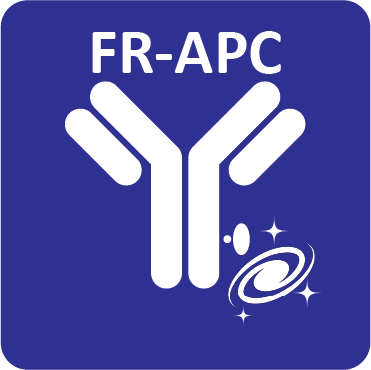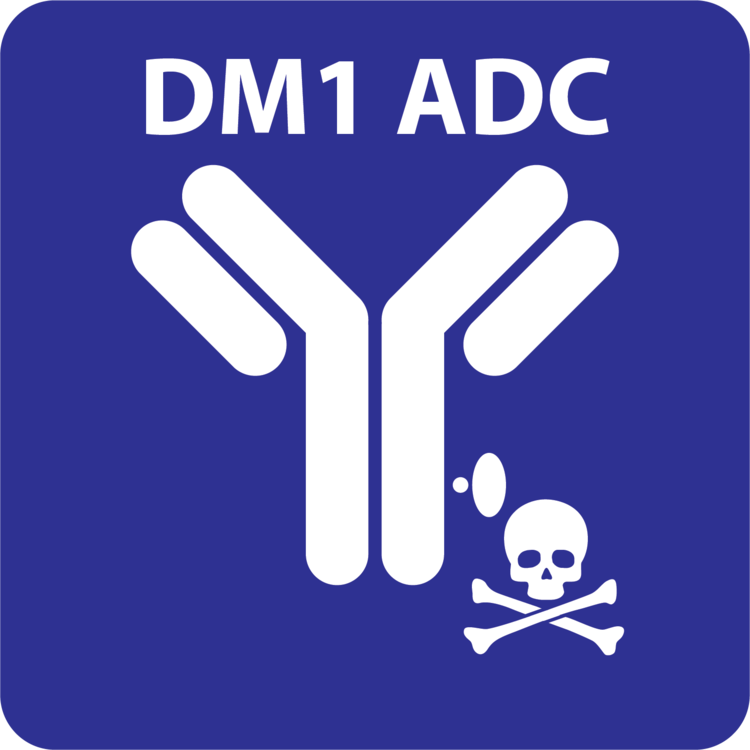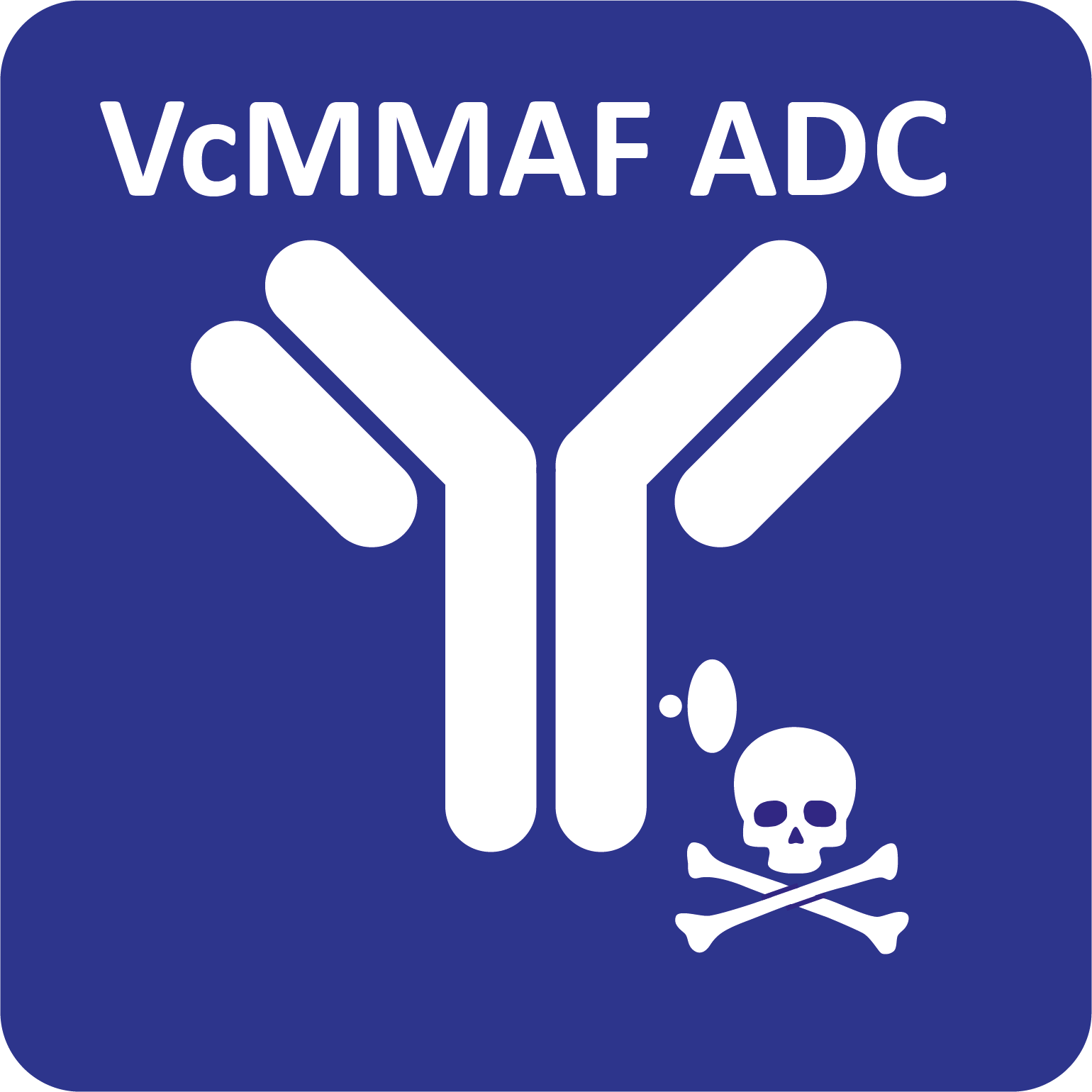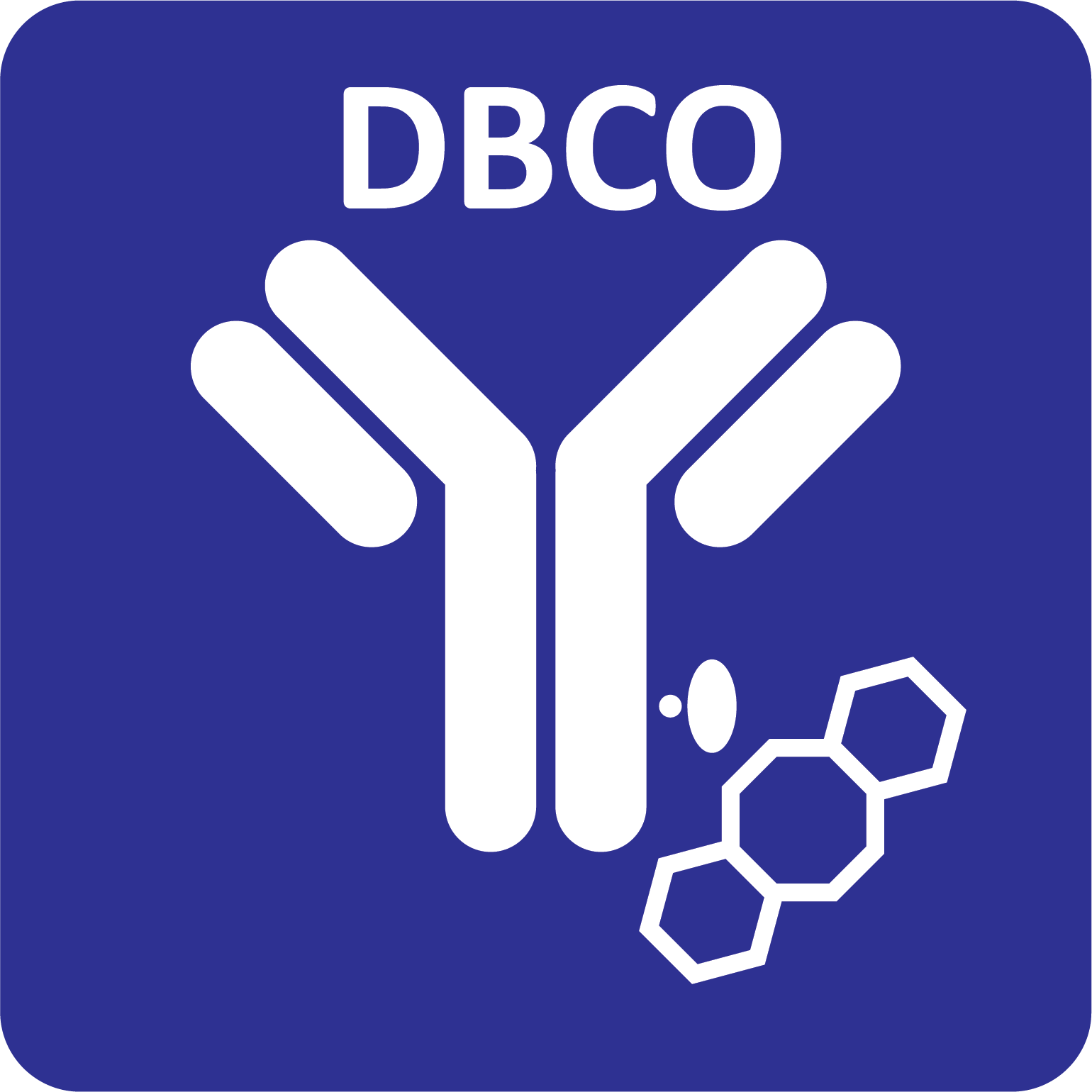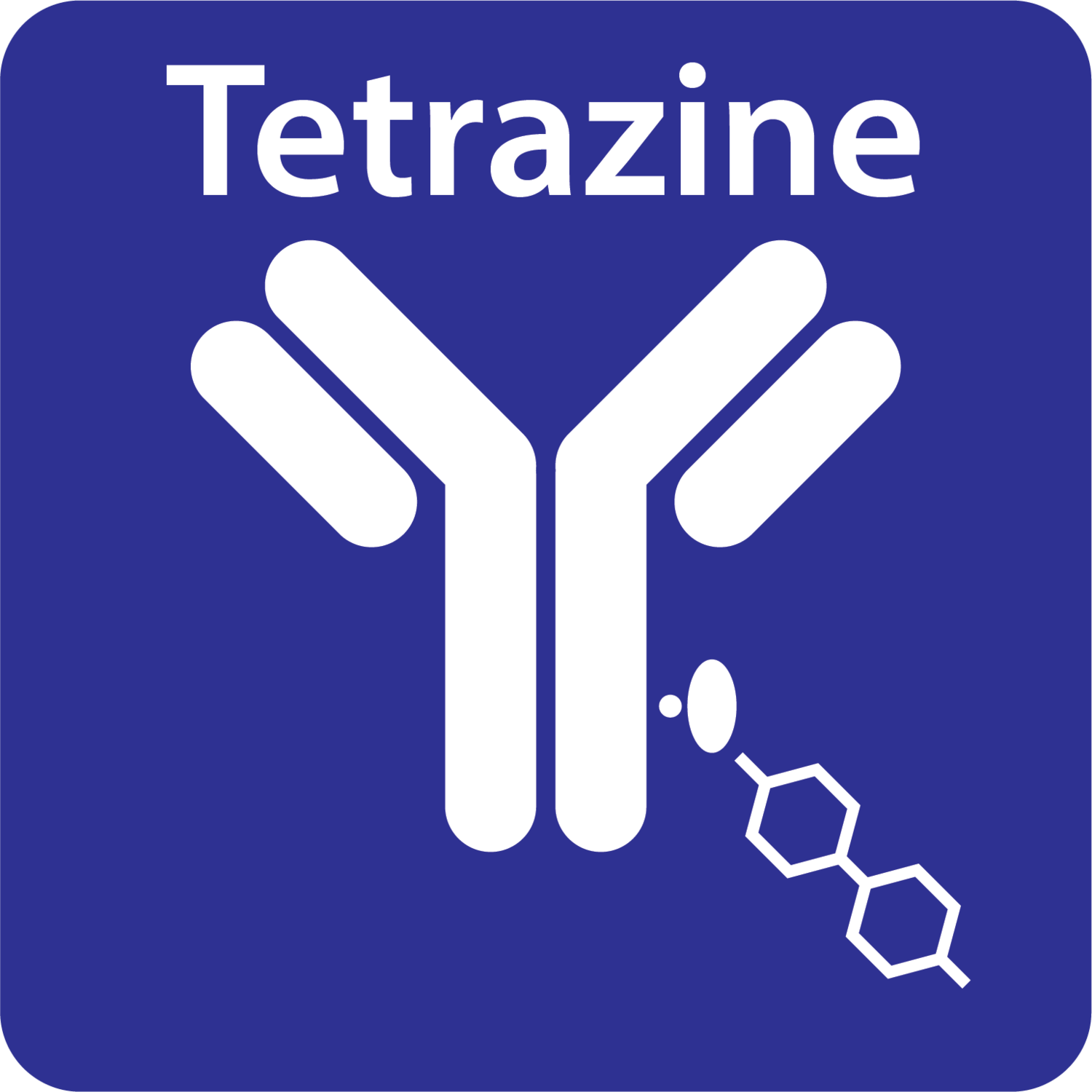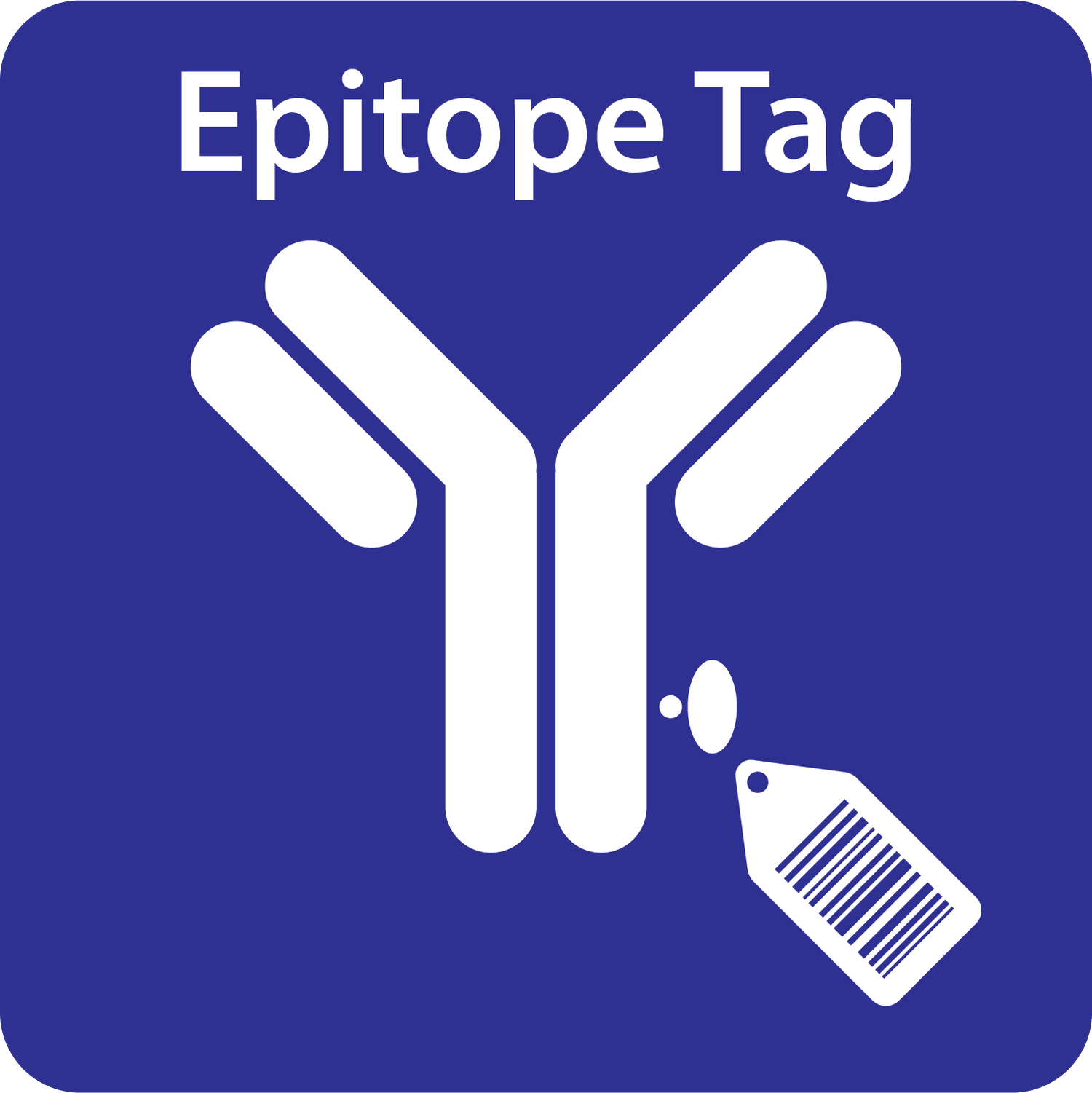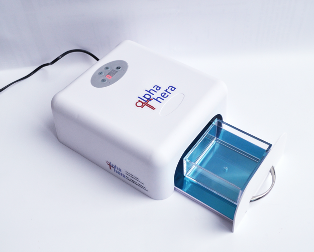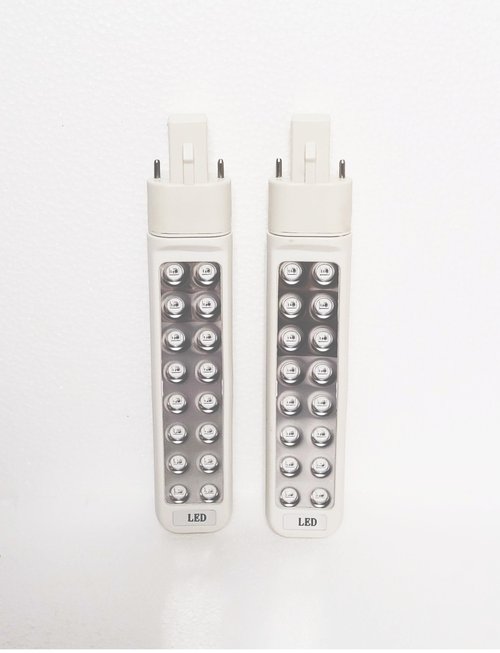Your cart is currently empty!
LED PX2 Photo-Crosslinking Device
AlphaThera’s LED Photo-Crosslinking Device (LEDPX) uses non-damaging light (365nm) to enable the efficient and site-specific labeling of antibodies with all oYo-Link products.
AlphaThera’s LED Photo-Crosslinking Device (LEDPX) uses non-damaging light (365nm) to enable the efficient and site-specific labeling of antibodies with all oYo-Link products.
LED Photo-Crosslinking Device (LEDPX)
For Research Use Only.
AlphaThera’s LED Photo-Crosslinking Device (LEDPX) uses non-damaging longwave UV energy (365nm) to enable the efficient and site-specific labeling of antibodies with all oYo-Link products. Two LED lamps are used to provide a uniform intensity UV exposure, while generating less heat than a fluorescent bulb. The LEDPX includes a digital countdown timer, which can be set to 1 or 2hrs illumination. There is an LED display that continuously indicates the amount of time remaining. There is also a cooling fan that can be turned on/off, to reduce sample heating. The device has a small footprint, a pull-out sample tray, and includes an acrylic container for placing samples in the device.
Note: oYo-Link products are compatible with a wide range of long-wavelength (365 nm) UV photo-crosslinking devices. Suitable alternatives include UVP UVL-56 and UVP CL-1000L. See the list of suitable alternative photo-crosslinking devices here. Please note that no UK-compatible power supply is provided.
Demo: Installing LEDPX2 Bulbs
This video demonstrates how to install bulbs for the LEDPX2 crosslinking device. AlphaThera’s LED Photo-Crosslinking Device (LEDPX) uses non-damaging light (365nm) to enable the efficient and site-specific labeling of antibodies with all oYo-Link products.
LED Photo-Crosslinking Device User Manual
Read the LED PX Device user manual for instructions on how to use AlphaThera’s device to perform the photo-crosslinking for antibody conjugation.
Antibody Conjugation User Manual
Read our antibody conjugation usual manual for instructions on how to easily conjugate your antibody with oYo-Link products.
Demo: oYo-Link® Antibody Conjugation
Find out how to site-specifically label your antibody with just two steps: mix and illuminate. 30 seconds hands-on time, 2 hours total.
oYo-Link® Product Brochure
Download our brochure for more information and to access 20% off your first order of oYo-Link® Antibody Labeling products.
Note: The new version of the device, LEDPX2, is compatible with most outlets worldwide. Check the specs for details. Catalog
| Catalog | Amount Labeled | Price(USD) | Spec Sheet |
| AT8001-D (LEDPX2) | Device (March 2022) to perform photo-crosslinking. International Compatibility: 100-240V AC 50/60Hz | $395 | Download Here |
| AT8001-D (LEDPX1) | Device (2020-January 2021) to perform photo-crosslinking. 110/120V; 60Hz US-style outlets | $395 | Download Here |
| AT8001-B | Two Replacement Bulbs | $35 | Download Here |
Specifications:
Will oYo-Link work with my antibody?
Please check the antibody compatibility table. Note: oYo-Link mIgG1 can be used to label mouse IgG1 antibody. Currently, oYo-Link mIgG1 is only available for certain products. Please check the product webpage. oYo-Link mIgG1 only labels mouse IgG1 and is not compatible with other antibodies.
Can oYo-Link be used to label antibodies in the presence of albumin and/or Tris?
Yes, since oYo-Link specifically bind to the heavy chain of IgG, it works in the presence of both albumin and Tris. oYo-Link is compatible with all common buffers. See the full buffer compatibility table here.
If an oYo-Link product has accidentally been left at room temperature for a week, will it still work?
With the exception of oYo-Link MNase and oYo-Link DBCO, all oYo-Link products are shipped as white or clear pellets and are very stable. While we recommend cold storage, they will not exhibit any loss of activity if left at room temperature for a week. oYo-Link MNase and oYo-Link DBCO must be shipped and stored cold (-20°C) immediately upon arrival, otherwise there will be a loss in activity.
Does AlphaThera offer conjugation service?
Yes. If you are interested in our conjugation service, please contact us at support@alphathera.local. For custom conjugation services, you will need to send us your antibody. The conjugation and purification fee depends on the size and specifications of each order. Purification is not required for most applications.
How many oYo-Link labels will be conjugated to each antibody?
For most subclasses and species of antibody, oYo-Link will result in the conjugation of 2 labels per antibody (maximum), one label per heavy chain. For example, ~95% of human IgG and Rabbit IgG will have two labels per antibody. However, there are a few antibodies such as mouse IgG2b and goat IgG, where the conjugation is slightly less efficient. In this case, 60 to 80% of the antibody will be labeled and have a mixture of 0, 1 and 2 labels per antibody. See the antibody conjugation efficiency here
How do I know if oYo-Link was successfully conjugated to my antibody?
Antibody conjugation can be checked on SDS-PAGE gel. An example is present in the supporting data on each product page.
Does 365nm UV illumination damage the antibody and its binding affinity?
The conjugated and unconjugated antibody binding affinities have been tested via both ELISA and cell binding assays and don’t show any difference.
Do I need to remove free oYo-Link after conjugating to antibody?
For most immunoassay applications, purification is not necessary. In our standard recommended protocol, the molar ratio of oYo-Link-to-antibody is 5:1. These conditions ensure that the antibody conjugation efficiency reaches its maximum; however there will be a slight excess remaining in your antibody mixture. This is usually removed during immunoassay washing steps. However, if your application requires high antibody-conjugate purity, please contact us for more information on this process and for a detailed protocol.
For oYo-Link click-chemistry products, should I perform the click reaction before conjugation?
When working with oYo-Link Azide (Catalog #: AT3002) and oYo-Link DBCO (Catalog #: AT3003), it is required to perform the click chemistry coupling reactions with the molecule of interest first, prior to photo-crosslinking to an antibody. This is to avoid UV illumination damage to the click moiety and to avoid diluting oYo-Link prior to the reaction to maximize the reaction efficiency. For oYo-Link Tetrazine (Catalog #: AT3004) and oYo-Link Thiol (Catalog #: AT3001); it is recommended to perform the coupling reaction before photo-crosslinking. This is to avoid diluting oYo-Link prior to the coupling reaction to maximize the reaction efficiency.
What is the lowest amount of antibody that can be labeled by oYo-Link reagents?
We recommend working with at least 1 µg of antibody; however, it is possible that even lower amounts of antibody can be labeled.
Can antibodies that are highly dilute be labeled by oYo-Link reagents?
Yes, antibodies can be efficiently labeled even if diluted to concentrations as low as 50 µg/mL.
- LED lights minimize sample heating and have long bulb life.
- Narrow 365nm bandwidth UV light
- Fan to minimize sample heating
- Ability to adjust exposure time (60 min or 120 min)
- Acrylic container included, which can be used for placing samples on ice.
- Small footprint
Please Select Epitope Tag Options
4 EPITOPE TAGS: Please select only 4 Tags Below:
Each tag will be able to label the amount of Ab you selected on the previous page.

